The exhibition Lucio Fontana | Osvaldo Borsani retraces the creative partnership between the architect and designer Osvaldo Borsani and the famous artist Lucio Fontana. It features the highest examples of their collaboration, beginning with Fontana’s return to Italy in the late 1940s and extending into the 1950s. This immersive showcase highlights exemplary works from this period, some of which originate from the inception of Casa G. The exhibition aims to fully recreate one of the few living spaces created through the joint efforts of these two artists within the exhibition space. The partnership between Borsani and Fontana was a collaboration born from the ability to transcend their individual creative trajectories, leading to a new destination where the constraints and divisions of their respective disciplines were surpassed. This union gave rise to a liberated, rich exploration of form and creativity. The fusion of their distinct technical perspectives resulted in an environmental vision where every element contributes to the realization of a harmonious and inclusive space.
The reimagining of interior spaces is deeply influenced by the coalescence of Fontana’s Baroque and Spatialist elements alongside Borsani’s technological and aesthetic sensibilities. Between 1947 and 1956, numerous interior projects emerged from their experimentation, resulting in environments where surfaces and spaces expand and harmonize. Their refined plastic work combines figurative and abstract elements, reflecting the rapid and profound transition undertaken by both artists between two eras, two styles, and two worlds simultaneously.
Thus, the famous Ceiling of 1949, entirely rearranged for the exhibition, is a fine example of total sculptural decoration blending Fontana’s traditional and modern research elements. It features Spatialist spirals alongside grand Baroque motifs, accompanied by the innovative use of neon—a sculptural manifestation of aerial light that would become iconic in Fontana’s work of the 1950s. Additionally, the Mobile Bar from the same year holds significance in the spatial concept envisioned by Borsani and Fontana, serving as a focal point for their creative experimentation where architectural elements intersect with Fontana’s more classical language.
The exhibition also features a core selection of sculptural works created during this period of friendship, showcasing pinnacle examples of Fontana’s portrait technique and his innovative reinterpretations of equestrian themes. Concluding the exhibition itinerary is the presentation of Fontana’s original drawings from 1956, conceived for the facade project of Palazzo Tecno in Milan—a commission by Osvaldo Borsani. These drawings are still adorning the first floor of the historic headquarters building. Additionally, a notable collection of contemporary artworks and furnishings offers a broader perspective on this significant period of cross-pollination and mutual influence within Italian arts.
Lara Facco P&C
Viale Papiniano 42 | 20123 Milan
T. +39 0236565133 | E. press@larafacco.com

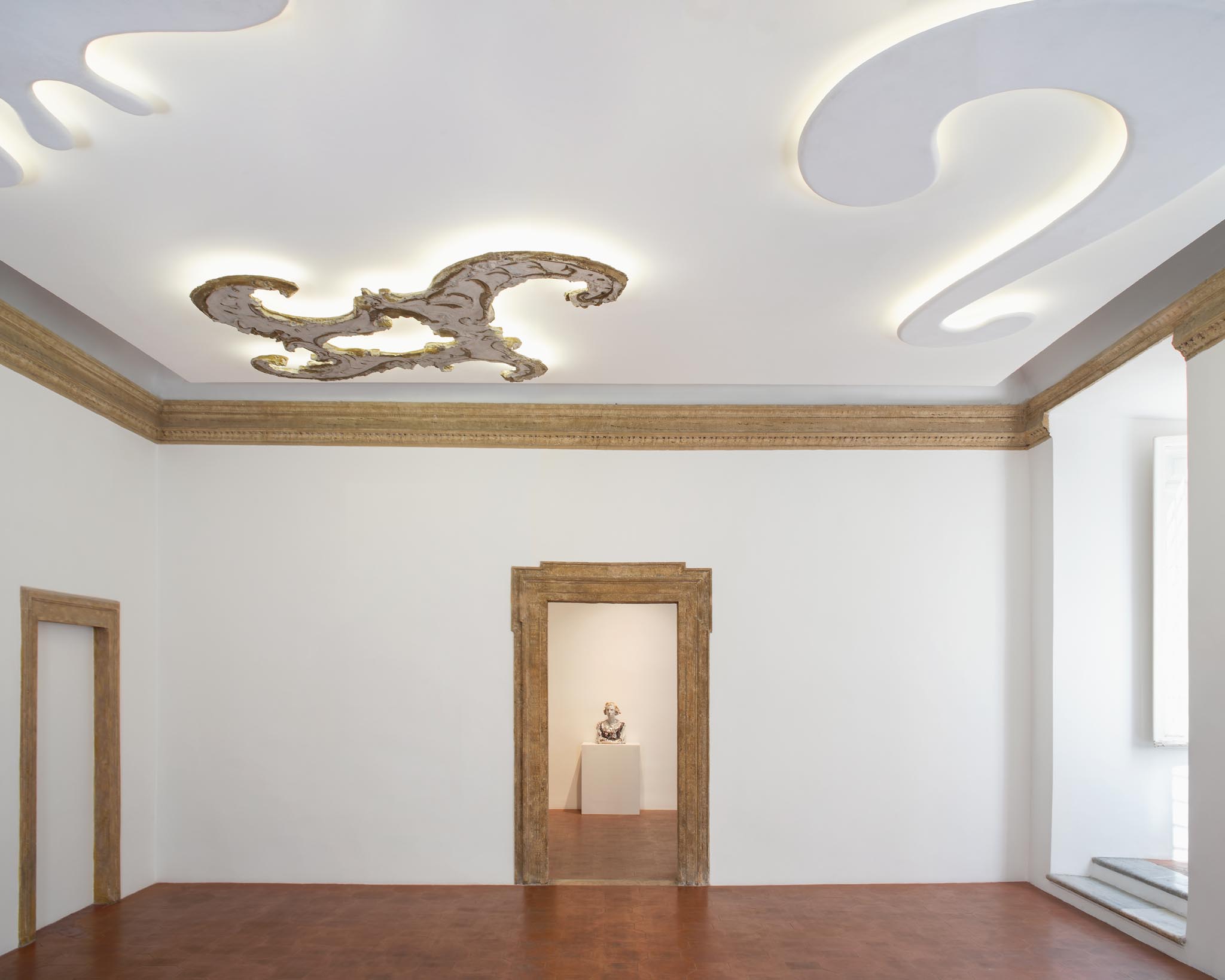
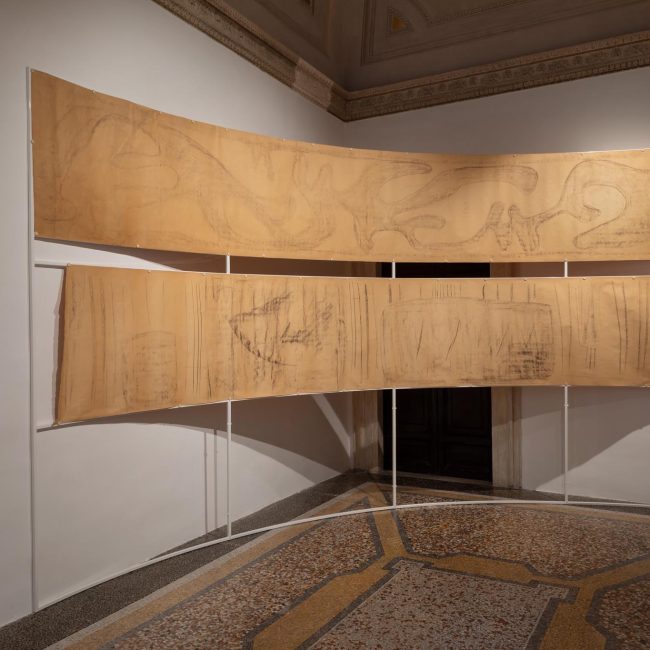
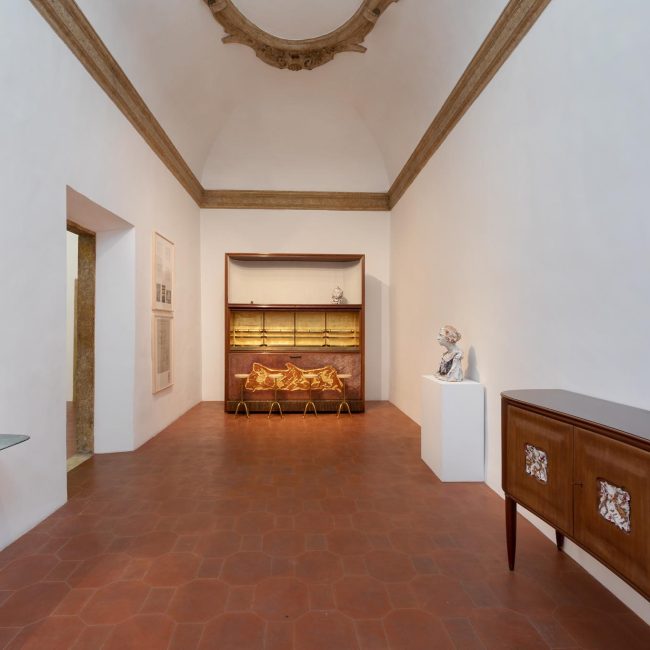
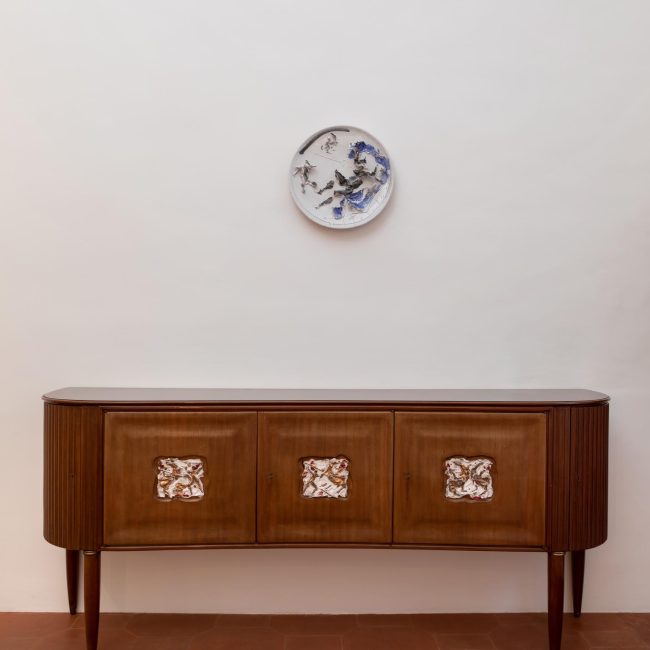
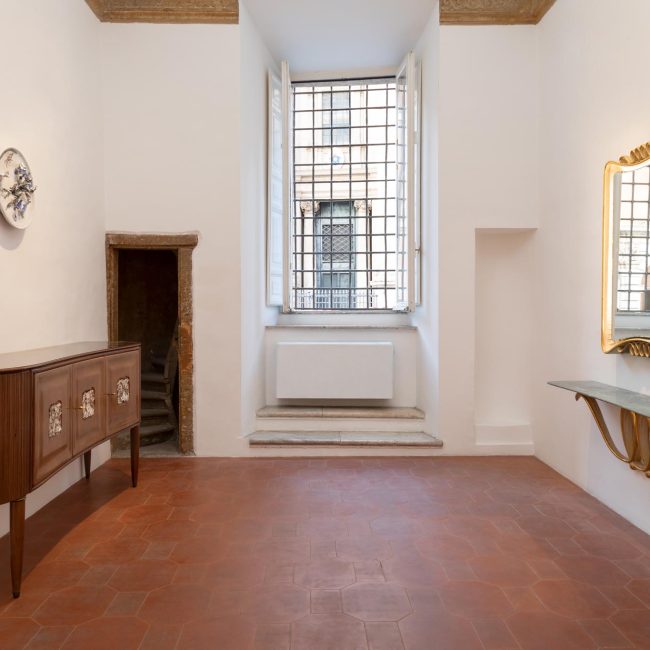
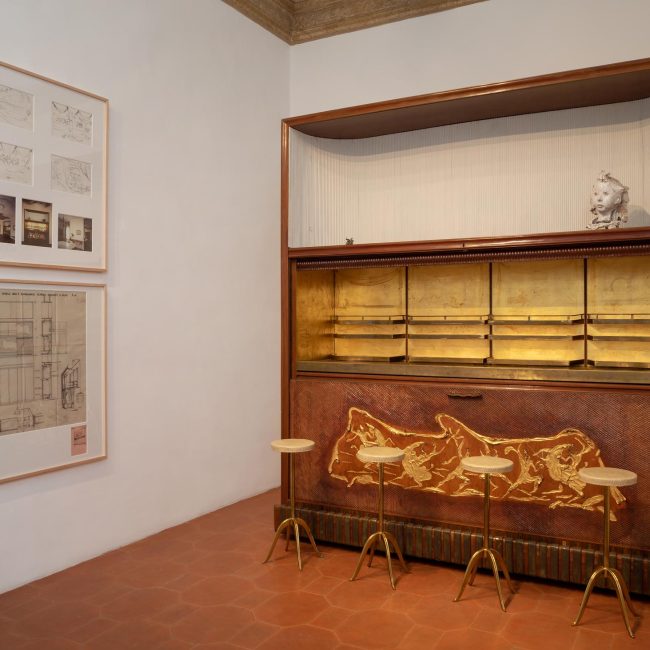
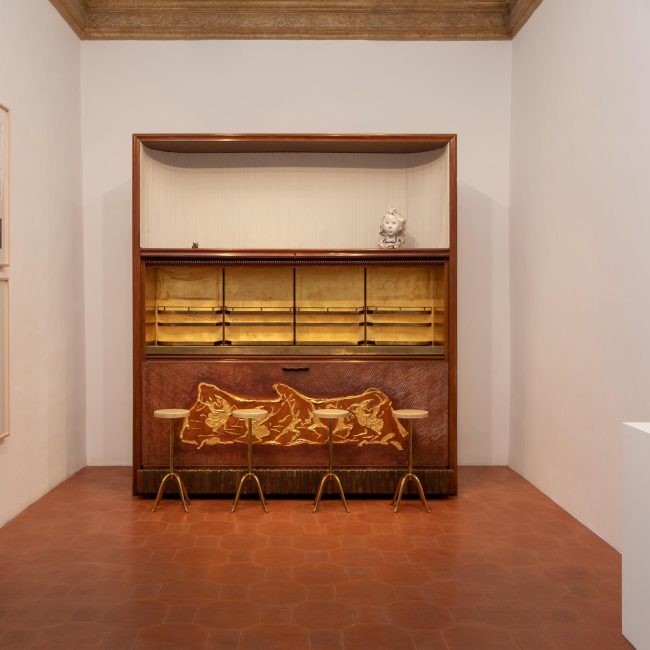
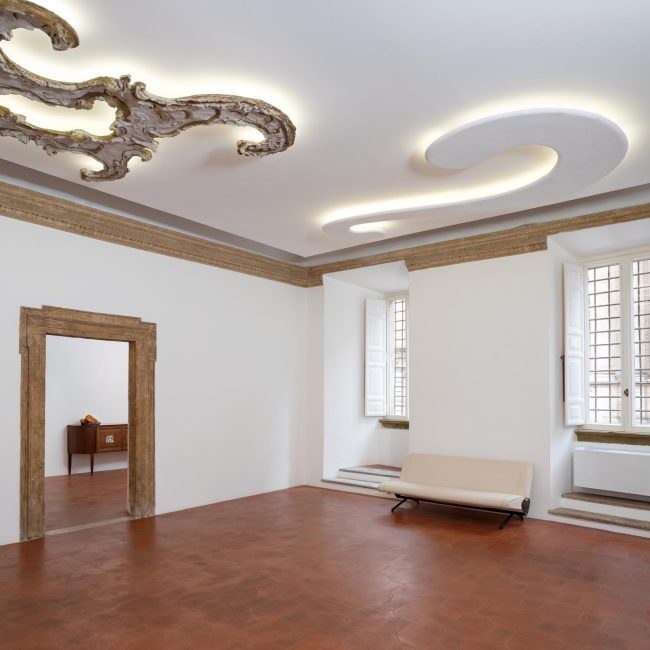
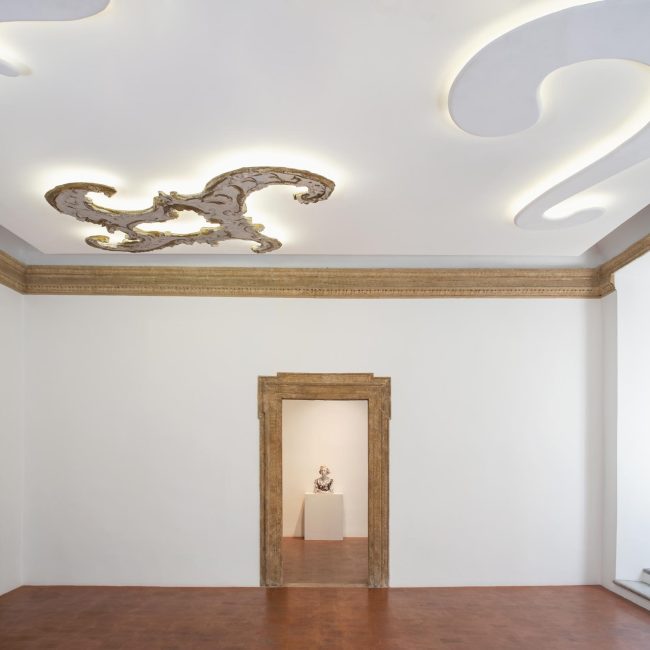
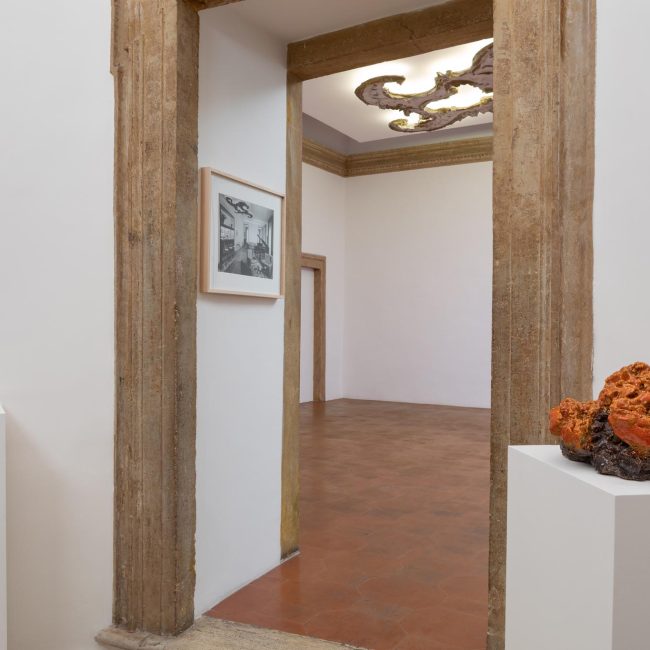
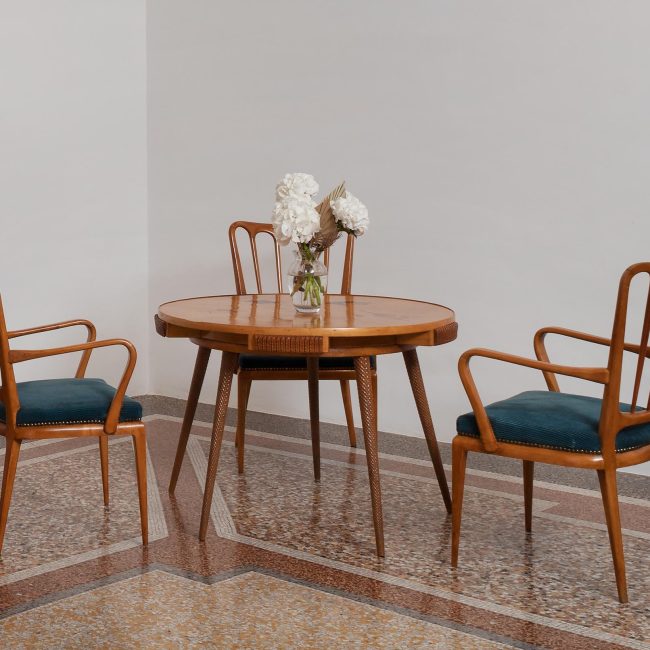

Lucio Fontana (1899 – 1968) "Ritratto di Alba Borsani" terracotta smaltata riflessata 57 x 42,2 x 31 cm (22.44 x 16.62 x 12.21 in) Eseguita nel 1948-1949
Lucio Fontana (1899 – 1968) Studi preparatori per balconata carboncino su carta da spolvero 91 x 555 cm (35.83 x 218.50 in); 91 x 583 cm (35.83 x 229.53 in) Eseguiti nel 1950 ca.
Osvaldo Borsani (1911 – 1985) Mobile Bar struttura in legno con pannello frontale saliscendi; interventi decorativi interni ed esterni su legno di Lucio Fontana 315 x 243 x 65 cm (124.02 x 95.67 x 25.59 in) Eseguito nel 1949
Lucio Fontana (1899 – 1968) "Soffitto" tre pannelli in stucco con retroilluminazione in luce neon misure approssimative della stanza originaria: 800 x 500 cm (314.96 x 196.85 in) Eseguito nel 1949
Lucio Fontana (1899 – 1968) "Seppia" ceramica policroma riflessata 20,5 x 30 x 20 cm (8.08 x 11.81 x 7.88 in) Eseguita nel 1937